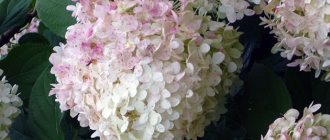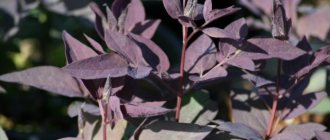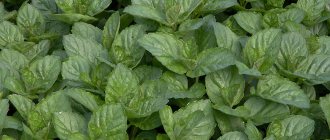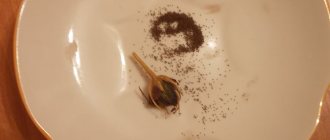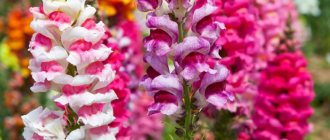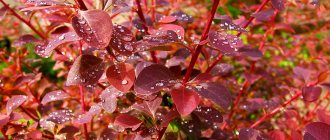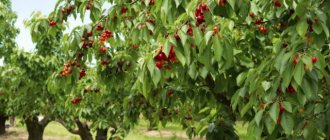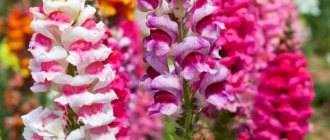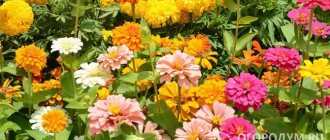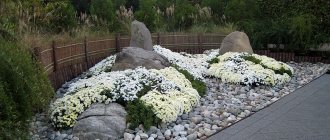Description and characteristics of aster
Among the varieties of asters, there are more than 400 varieties, photos of which can be seen below. They all have certain similarities that are characteristic of the culture.
- Root system - has a fibrous structure, widely diverges to the sides, reaching a depth of 15 - 25 cm;
- The stems are bushy, green in color, sometimes have a reddish tone. The height can vary from 20 cm to a meter. The stem has small hairs and longitudinal grooves;
- The foliage is dark green and can be either smooth or pubescent. The leaves, shaped like an oval-rhombic figure with pointed points, are located mainly at the bottom of the stem, where they reach a decent size, while at the top they are smaller, slightly oblong.
There are both annual and perennial varieties.
Care
Asters will not require much time and effort to care for. Adult bushes are not afraid of lower temperatures, but prefer warmth from 18 to 25 degrees.
You should not get too carried away with watering plants, this can lead to plant diseases, so on heavy soils the solution to the question of how to water asters is carried out with the help of high-quality drainage. Asters do not like spraying, which significantly saves housewives’ energy. But the soil should not be allowed to dry out.
Mineral fertilizers or well-diluted chicken manure are used to feed the plant. But its use is recommended on really poor soils. The first application of fertilizer is carried out several weeks after transplantation to a permanent place, the second and third are timed to coincide with the appearance of buds and their flowering.
Loosening and weeding will help provide the aster with more oxygen and nutrients. To prevent the soil from becoming crusty, the soil is loosened after each watering or rain. Weed removal is done as needed.
Varieties and types of perennial asters
Among the popular varieties are perennial aster flowers, the varieties and photos of which are presented below.
Alpine
The Alpine aster variety is a plant that belongs to the early flowering species. Already in May, the first multi-colored buds appear, which are planted on low (about 40 cm) stems. The aster delights with its riot of colors for about a month, but if the site is chosen correctly for it (sunny and dry), then the flowering period can be 1.5 months. Alpine aster has several varieties:
- Alba. It has small semi-double flowers (3 cm in diameter) of snow-white color;
- Glory. Buds up to 4 cm in diameter, sky blue with a bright yellow center;
- Goliath. Purple flowers on elongated stems. The flower is used to decorate rockeries and alpine slides;
- Dunkle Schone. The flowers are dark purple and small in size. The culture is frost-resistant;
- Rosea. Delicate pink petals located on medium-length stems delight the eye for about 3 months. The first flowers appear in June.
Italian
The Italian aster cannot boast of a large number of colors and shapes; it is less resistant to adverse environmental influences, but is very popular. Among the best varieties are:
- King George - has a lilac color, narrow-petalled inflorescences;
- Coerulea - characterized by a lilac-blue color;
- Gnome - a variety intended for cutting, has soft lilac inflorescences;
- Rosea – suitable for cutting, has a bright pink color;
- Lady Hindlip – has light pink pastel flowers;
- Henrich Seibert - a brighter pink flower with narrow petals;
- Kobold - has large inflorescences of a lilac-purple hue;
- Herman Lens – large purple flowers.
New England (American)
The main difference between the New England aster is its thick shoots, which can reach 150 cm. They bloom late, love nutritious soil and good care.
- Browman. Lilac-violet flowers appear in September, forming lush clusters;
- Dr. Eckener. The variety's red-violet buds, 4 cm in diameter, bloom at the end of September and delight with their lush inflorescences for just over a month;
- Lily Fardell. Rich pink color, medium sized inflorescences. Great for making bouquets. The stem is literally strewn with buds, which makes the variety the most unique;
- Rothe Stern. They appear to be double inflorescences of a carmine hue. Flower buds are large, bright and expressive. Flowering occurs in mid-autumn.
New Belgian (Virginian)
In the New Belgian aster, the main difference is the type of stems. They are quite tall, but not all have a lot of foliage. Some stems appear completely bare, while neighboring ones are completely covered with greenery.
- Ballard. Small flowers of a bright pink hue. Culture can become a decoration for any flower display. It looks impressive even when planted alone;
- Beechwood Ravel. A bush about a meter in height, on which purple inflorescences are majestically placed, contrasting with green petals. Flowering lasts more than 30 days;
- Oktoberfest. A variety of asters of a blue hue, semi-double inflorescences, diameter 4 cm;
- Saturn. Lush flowers, painted in blue tones. The bush is tall - at least 130 cm, flowering is short - less than a month.
Attention! Aster has special significance in many countries. In Greece - as an amulet, in Hungary - as a symbol of autumn, in China - symbolizes infallibility, in Japan - high thoughts, in France - sorrow.
Bessarabian
Bessarabian aster belongs to those varieties that do not grow more than 80 cm, but have many inflorescences painted in lilac shades. Their main difference is the dark brown core.
Bush
Bush asters are distinguished by a variety of colors and compact shape. They can be trimmed to give the desired shape to the bush.
- Blue Bird. It is a small bush that grows up to 25 cm. The flower petals have an interesting color: the sky blue shade turns into lilac. Blue Brad is a variety that is considered ideal for decorating borders;
- Venus. A 20-centimeter bush, which is a good choice for constructing hanging compositions and planting in floor containers. Purple-pink buds appear in September and delight with their flowering throughout the month;
- Dwarf Nancy. It has bushes up to 25 cm in height, the inflorescences of which are painted in lilac shades, the petals have a reed shape;
- Niobe. A variety of snow-white asters that grow up to 30 cm. The main decoration of the white petals is the bright yellow center;
- Royal Ruby. A purple-ruby flower, which many gardeners call royal. The flowers are small in size, so this variety is often used to create spectacular bouquets.
Agerate-shaped
The agerate-shaped variety of asters is less popular. And this is due to the fact that this species is not decorative, but medicinal. The bushes grow up to a meter in height, the stems are straight. The buds are small, forming shields, their color is blue.
Important! In Agerata aster, all parts of the plant are medicinal.
Globular
Among the best varieties of asters, one can distinguish the spherical one. This perennial flower is a regular-shaped ball formed by small but numerous pink inflorescences. The height of the bush is no more than 50 cm, which makes this variety of asters extremely aesthetic in appearance.
Terry
The color of double asters can be different, but they have one thing in common - thick, ball-like inflorescences.
Heather
The bushes, about 100 cm high, are presented in the shape of a pyramid, the shoots bend down. The flowers are numerous, but quite small, and bloom in early September. The shades are predominantly light, mainly pink and white. Culture is actively used to decorate public gardens, gardens and parks.
Tatar
Tatar aster is a medicinal and decorative variety. Its tall bushes (about 1.5 m) are strewn with small inflorescences of a pale blue or light pink hue. In the middle there is a bright yellow spot, which gives the variety a decorative appearance. The Tartarian aster prefers cool and damp places.
Landing
Planting and caring for aster in open ground is not difficult and is accessible even to novice gardeners.
Seedling method
Plant cultivation begins in early spring (mid-March), when aster seeds are sent into the ground for germination indoors. The seeds germinate quite quickly without additional movements from the hostess, so the first shoots can appear already 3-4 days after planting.
As the plants grow, they are hardened off. Transplantation to a permanent place is carried out in late April-early May.
Seeds
Unpretentious flowers can also be grown by planting seeds in open ground, but this is done after the temperature does not steadily drop below 10 degrees. In this case, the seeds are placed in furrows, lightly sprinkled with soil and covered with mulch.
When sprouts appear, the protective layer of grass and leaves is removed. But it should be taken into account that bushes grown in this way will bloom a couple of weeks later than plants obtained by seedlings.
Planting in the ground can also be done in late autumn. In this case, the seeds are placed in frozen ground in pre-prepared grooves and sprinkled with soil. Sprouts that hatch in the spring have a much higher endurance threshold.
Flowering will begin 90-110 days after sowing, depending on the variety.
The best varieties of annual asters
Late and early varieties of asters, which are classified as annuals, are also very popular among gardeners. The most popular is the Chinese aster, which has at least 600 subspecies of various colors, shapes and structures.
Among the best and most popular varieties of Chinese annual aster are the following types:
- Galaxy. This aster has large needle-shaped double inflorescences (up to 10 cm in diameter), the shades of which can be very diverse. The bushes grow about 60 - 70 cm in height;
- Rosanna. Aster is a peony-type plant that grows up to 65 cm in height. The color of this species is pink, the petals on the buds are tightly pressed to each other, which creates the effect of splendor;
- Pompom. Aster is very similar to peonies or chrysanthemums and has double inflorescences of various shades.
Selecting a location
Planting an aster and its future life begins with determining the most suitable place of residence for the plants. Such a place will be an area well illuminated by the sun's rays, or a small partial shade with loose soil.
The seedlings will feel great in the place where marigolds or calendula grew, but will not be very accepting of the territory that in the past was given over to gladioli, tulips, potatoes or tomatoes.

